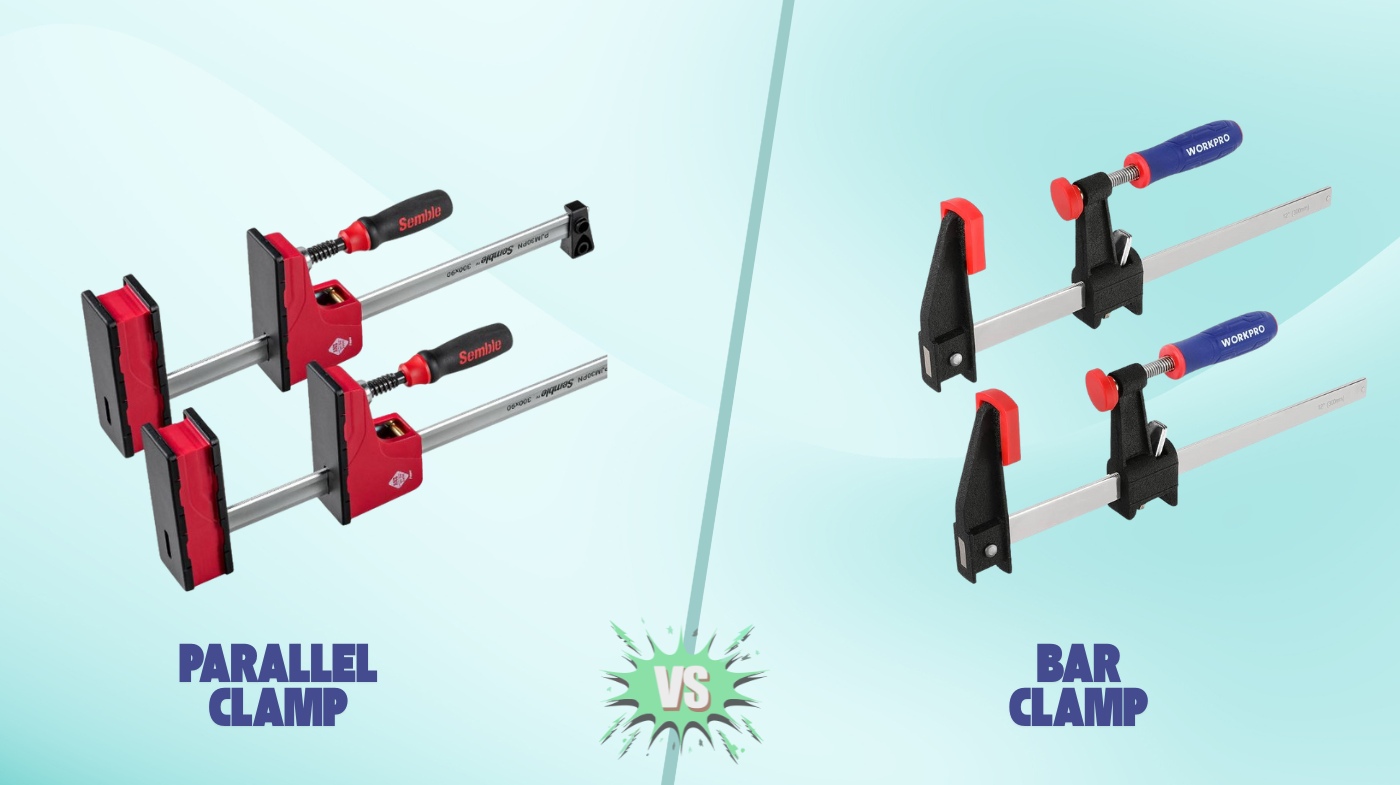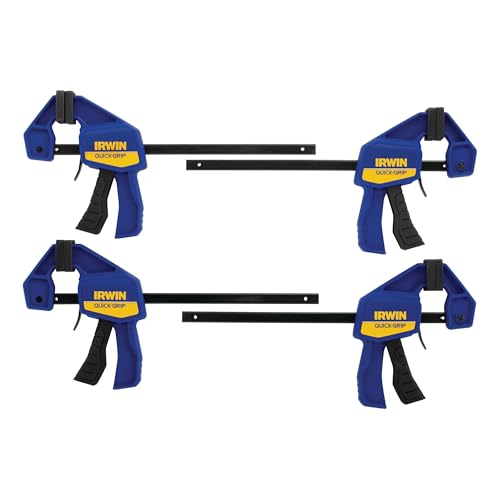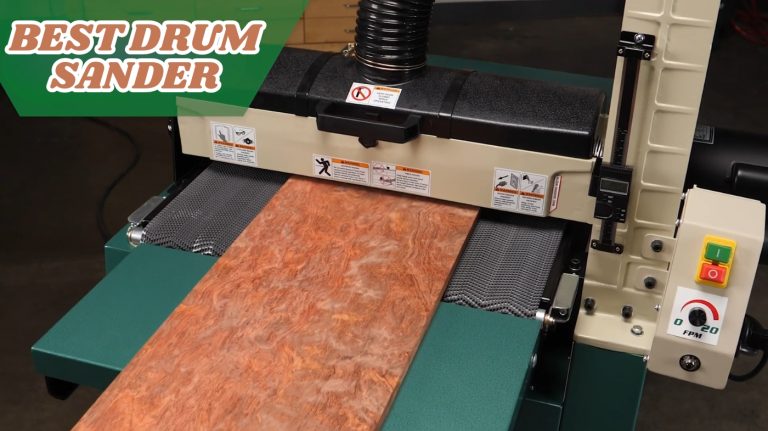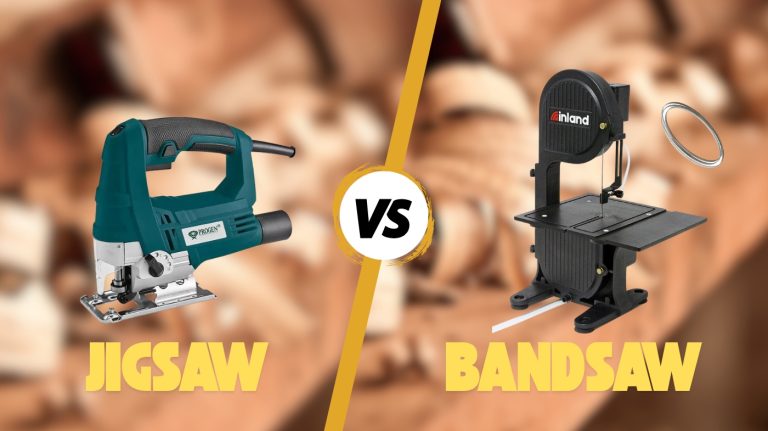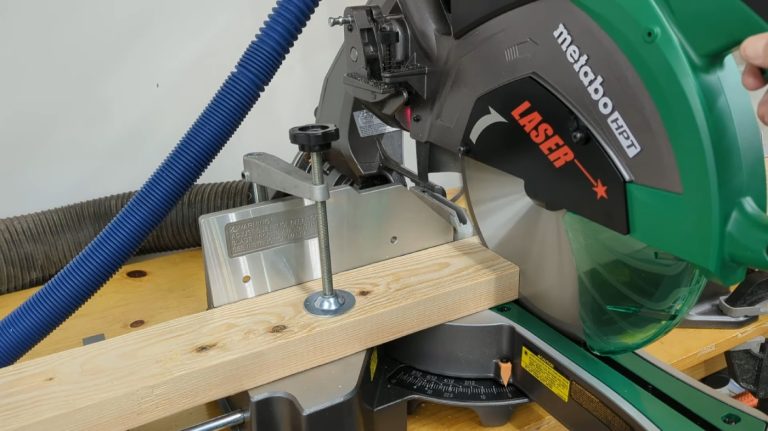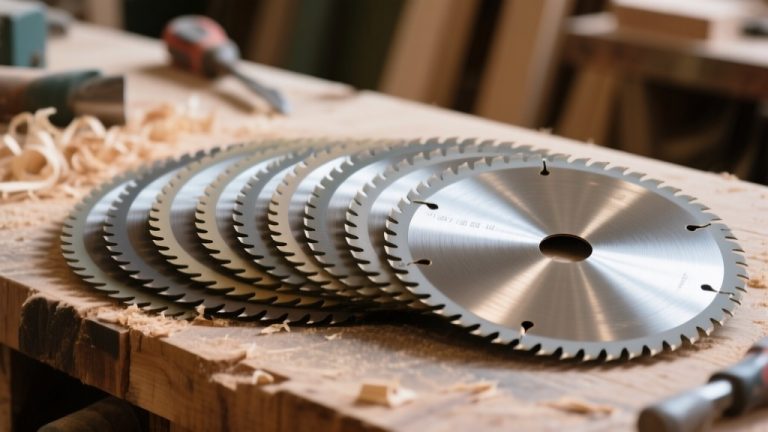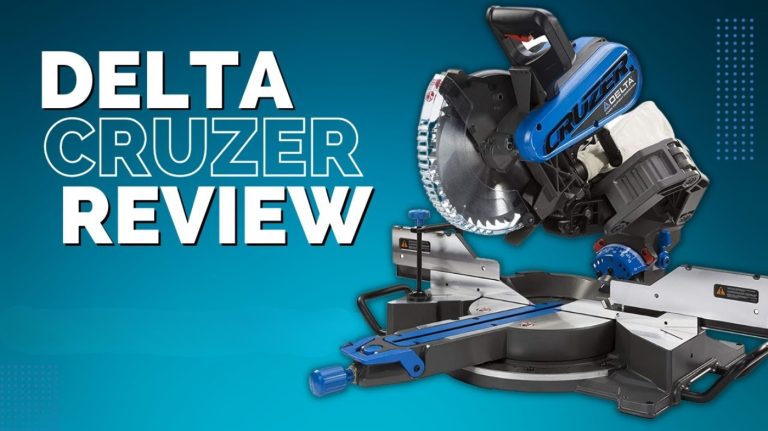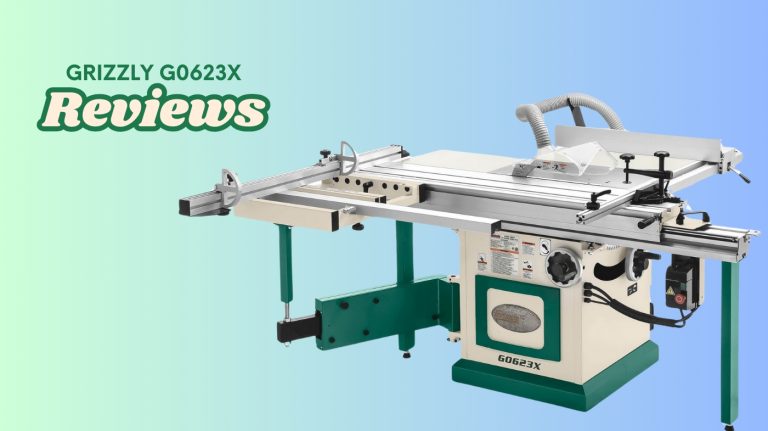Parallel Clamp vs Bar Clamp: Key Differences Explained
You’ll want parallel clamps when you need perfectly aligned jaws and even pressure. They are ideal for cabinetry and delicate glue-ups as they prevent warping with broad, flat jaws and consistent force.
Bar clamps are lighter, faster to adjust, and suit general tasks but may cause uneven pressure and distortion. Parallel clamps offer better control and safety features but cost more and weigh more. If your projects demand precision, understanding these distinctions will help optimize your clamping choices.
- ULTIMATE WOOD WORKING CLAMP SET – This set includes two 24″ Inch parallel clamps and two 31″…
- 3.5 INCH WIDE PADDED JAW – The 3.5-inch wide reversable padded jaw delivers a broad, uniform surface…
- 1,100 POUNDS OF CLAMPING PRESSURE – Backed by 1,100 lb (500 kg) of clamping force, these bar clamps…
- 1. The complete set includes 4pcs 6″ bar clamps,2pcs 12″ bar clamps and 2pcs 6″ spring clamps, which…
- 2. 6″ clamps are suitable for spreaders up to 11-9/64″ and 12″ clamps are suitable for spreaders up…
- 3. Strong nylon body and high-quality hardened steel bar have good impact resistance and can fully…
Key Takeaways
- Parallel clamps maintain perfectly parallel jaws, ensuring even pressure ideal for cabinetry and panel glue-ups.
- Bar clamps are lighter, more adjustable, but do not guarantee parallelism, risking uneven clamping pressure.
- Parallel clamps apply about 1000 pounds of even force with broad jaws that reduce surface damage.
- Bar clamps offer quicker setup with simpler screw tightening but lack safety locks and may slip.
- Parallel clamps have higher upfront cost and weight but provide better flatness and longer service life.
Quick Comparison Table for Parallel and Bar Clamps
| Feature | Parallel Clamp | Bar Clamp |
|---|---|---|
| Jaw Alignment | Maintains perfectly parallel jaws for precise and square clamping | Jaws may tilt slightly, causing uneven pressure |
| Pressure Distribution | Even and consistent, prevents warping or indentations | Concentrated pressure on smaller areas, risk of marks |
| Clamping Force | Around 1000 lbs of smooth, controlled pressure | Can deliver stronger force, but less uniform |
| Ease of Use | Ergonomic handles and safety locks for secure control | Simple design, easy to adjust but may slip |
| Weight & Size | Heavier due to robust build and wider jaws | Lighter and compact, suitable for quick setups |
| Precision Work | Ideal for cabinetry, panels, and fine woodworking | Best for general repairs, glue-ups, and flexible tasks |
| Durability | Long-lasting, resists bending and wear | Requires regular maintenance to prevent bar deflection |
| Cost | Higher initial investment, offset by longevity | Budget-friendly and widely available |
| Maintenance Tips | Clean bars, lubricate screws, and store vertically | Clean threads, check for bends, and store flat or hung |
Design and Functional Differences
Although both parallel clamps and bar clamps serve to secure workpieces, their design and functionality differ markedly, impacting their suitability for various tasks.
Parallel clamps have jaws that stay perfectly parallel during clamping, maintaining flatness and squareness. This makes them ideal for panel glue-ups and cabinetry. Their jaws feature broad, flat contact surfaces and padding to prevent twisting and damage, but this design makes them bulkier and heavier.
In contrast, bar clamps use a simpler metal bar with one fixed and one sliding jaw tightened by a screw, offering quicker adjustability and lighter handling. The clamping pressure they provide is crucial for secure holding but may vary depending on the clamp type and build.
However, bar clamp jaws don’t guarantee parallelism, which can cause uneven pressure or warping if you’re not careful. You’ll find bar clamps versatile for quick setups and irregular shapes, while parallel clamps excel where precise alignment is critical.
Clamping Pressure and Workpiece Impact
When you apply clamping pressure, understanding the capacity and distribution characteristics of parallel and bar clamps is essential to protect your workpiece.
Parallel clamps typically deliver around 1000 pounds, offering even pressure via broad jaws that reduce surface damage. Bar clamps provide higher force but risk uneven pressure and distortion if misaligned.
Parallel clamp bars may deflect slightly, but their design maintains flatness better than bar clamps, which concentrate force on smaller areas.
Both types of clamps require proper handling to ensure workpiece flatness and avoid damage during the clamping process.
| Feature | Parallel Clamp | Bar Clamp |
|---|---|---|
| Max Clamping Pressure | ~1000 lbs | Higher, heavy-duty capable |
| Jaw Contact Area | Wide, flat jaws | Narrow jaw surface |
| Pressure Distribution | Even, reduces indentations | Concentrated, risk of marks |
| Workpiece Flatness | Maintained with proper setup | Potential distortion over spans |
User Experience and Setup Efficiency
Understanding how clamping pressure affects your workpiece naturally leads to contemplating how each clamp type feels and performs during actual use.
Parallel clamps offer ergonomic handles and smooth trigger mechanisms, reducing hand fatigue and enabling quick, controlled adjustments. You’ll appreciate their firm hold and safety locks that prevent sudden jaw drops, enhancing setup stability and safety. Many models, such as the Johnson Cabinet Master, feature a 90-degree tail bar clamp design that increases clamping surface area and screw travel for better versatility.
However, initial use may require a brief learning curve to master jaw engagement and trigger operation. In contrast, bar clamps feature straightforward screw tightening with smaller handles, making them intuitive but slower and more strenuous during repeated adjustments. They lack safety features, increasing the risk of sudden jaw slips.
Size, Weight, and Budget Considerations
Choosing the right clamp involves carefully weighing size, weight, and budget factors to match your specific project needs and workspace constraints.
Parallel clamps have larger jaws and heavier steel bars, offering superior clamping force but adding bulk and weight. Bar clamps provide a lighter, more compact option with variable sizes and materials, fitting smaller tasks and tighter spaces. For many woodworking projects, parallel clamps are considered essential because they maintain flatness in assemblies and provide strong clamping pressure.
Budget-wise, parallel clamps cost more upfront but often deliver longer service life and consistent pressure. Bar clamps range widely in price and may incur more maintenance costs over time.
| Factor | Parallel Clamp | Bar Clamp |
|---|---|---|
| Size | Larger jaws, thick bars | Variable sizes, lighter bars |
| Weight | Heavier steel construction | Lighter aluminum or steel |
| Initial Cost | Higher, precision-made | Lower to moderate, broad range |
| Longevity | Durable, fewer replacements | May need frequent upkeep |
Suitable Applications and Maintenance Tips
Selecting the right clamp for your project means matching its capabilities to your specific application and knowing how to maintain it for consistent performance. JET parallel clamps, known for their reliability and durability, are an excellent choice for woodworking tasks needing even pressure and stability, like cabinetry or fine furniture, where broad, flat jaws prevent twisting.
Use parallel clamps for woodworking tasks needing even pressure and stability, like cabinetry or fine furniture, where broad, flat jaws prevent twisting. For general glue-ups, irregular shapes, or deeper throat depth, bar clamps offer flexibility and stronger force but less uniform pressure.
Maintain parallel clamps by cleaning surfaces, lubricating screws, and avoiding over-tightening to prevent bar deflection. For bar clamps, regularly clean and lubricate threads, check for bends, and store them flat or hung to avoid damage.
Both require routine care to guarantee smooth operation and longevity, preserving clamping accuracy and protecting your workpieces.
Frequently Asked Questions
Can Parallel Clamps Be Used Effectively on Curved or Irregular Surfaces?
Think of parallel clamps as a steady compass guiding your project’s pressure evenly. You can use them on slightly curved surfaces if you toe-in the jaws and apply moderate force to keep the jaws parallel.
For more complex curves, you’ll need cauls or supports to mimic the workpiece’s shape; otherwise, the clamp faces won’t align properly, risking weak joints.
With careful setup, parallel clamps work, but they demand precision and patience.
How Do Temperature Changes Affect the Materials of Parallel and Bar Clamps?
Temperature changes cause metal bars in your clamps to expand or contract, altering length and tension slightly.
Plastic handles may soften in heat or become brittle in cold, affecting grip and durability.
Parallel clamps can experience altered bar deflection due to material stiffness shifts, while bar clamps’ simpler design is less affected.
To maintain accuracy, control workshop temperature, inspect for wear, and store clamps in stable conditions to prevent material fatigue and guarantee consistent performance.
Are There Safety Concerns Unique to Using Parallel Clamps Versus Bar Clamps?
Sure, safety snafus surface specifically with parallel clamps.
You’ll face issues like clamp slippage due to worn mechanisms and the risk of pivoting clamps creating unstable holds.
Their heavier heft can cause handling hazards, while sharp edges and pinch points demand cautious clamping.
Unlike bar clamps, parallel clamps offer limited force feedback, risking over-tightening and damage.
Regular inspection and gentle pressure application are essential for safe, secure usage.
What Accessories or Attachments Are Compatible With Each Clamp Type?
You can extend your parallel clamps’ capacity using K Body Extenders and improve grip on irregular shapes with Pivot Jaws or Tilting Adaptors.
For bar clamps, you’ll find replacement clamp pads and edge clamp attachments to protect surfaces and enhance hold.
Both clamp types support ergonomic handle conversions and universal jaw pads.
Don’t forget organizational tools like wall track systems or clamp stands to keep your workspace efficient and your clamps stable during use.
Do Parallel Clamps Require a Specific Storage Method to Maintain Alignment?
Just like a knight’s armor needs careful upkeep to stay battle-ready, your parallel clamps demand specific storage to keep perfect alignment.
Hang them vertically in snug racks that support bars evenly, preventing warping or twisting.
Avoid laying them flat or uneven loading, as that bends bars and misaligns jaws.
Regularly clean glue residue and apply wax to bars for smooth sliding.
This careful care preserves their precision and extends their service life.
Take the Next Step—Upgrade Your Clamping Game Today
Choosing between a parallel clamp and a bar clamp depends on your project’s demands. Parallel clamps offer precise, even pressure, ideal for delicate or complex assemblies. Bar clamps provide versatility and speed for general tasks.
Consider size, weight, and budget to match your workspace. By understanding their distinct functions and maintenance, you’ll guarantee efficient, secure clamping every time. This will make your woodworking smoother and more professional.
- High-quality Materials: The handle of our bar clamps is made of PA6+GF30% high-strength plastic,…
- 50-inch Super Large Jaw Opening: Our bar clamps for woodworking are perfect for most standard-sized…
- 1100lbs Strong Load Limit: These wood clamps for woodworking can easily handle various daily…
- NON-MARRING PADS: Grip firmly and protect your workpiece from scratches and scuffs
- QUICK-GRIP DESIGN: One-handed triggers release the clamps instantly
- STURDY: Resin construction with hardened steel bars to prevent flexing and bending
Last update on 2025-12-15 / Affiliate links / Images from Amazon Product Advertising API

